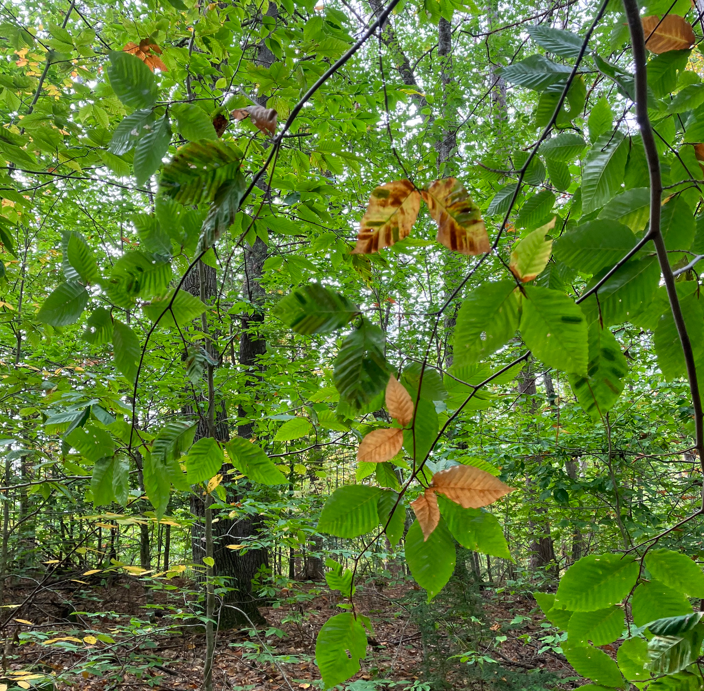PRESS RELEASE
For Immediate Release – July 26, 2024
Contact:
Josh Halman, Forest Health Program Manager
Department of Forests, Parks and Recreation
joshua.halman@vermont.gov, 802-279-9999
Beech Leaf Disease Expands into Vermont
What to look for and how to report any findings
Randolph, VT- Beech Leaf Disease (BLD), a new disease affecting beech trees and caused by an invasive worm-like nematode (Litylenchus creatae mccannii), has been detected in four Vermont counties: Bennington, Chittenden, Windham, and Windsor. It has only recently been discovered, so much about this disease remains unknown, including the full cause and how it spreads. However, we do know that BLD can have catastrophic effects on forest ecosystems. The Department of Forests, Parks and Recreation (FPR) needs the public's help in reporting potentially symptomatic beech trees to advance our understanding of the disease.
BLD affects buds and foliage of all species of beech trees, leading to leaf striping and loss as well as reduced leaf and bud production. While beech trees of all ages and size are susceptible to the disease, younger understory beech trees are thought to be more vulnerable. As beech trees are one of Vermont's five most common tree species, provide important food and nesting sites for wildlife, and play a key role in Vermont’s forests, the potential loss threatens to disrupt forest ecosystems and biodiversity.
First detected in 2012 in Ohio, BLD has rapidly spread across the Northeast U.S. and Canada. Researchers are actively exploring management options, but many questions remain unanswered. "We do not know how BLD is spreading across the landscape," says FPR’s Forest Health Specialist, Savannah Ferreira. "This makes it harder to predict its spread compared to other invasive pests."
In the early detection stages of BLD, look for dark striping between leaf veins with the darkened area being slightly raised and thicker than normal leaf tissues along with crispy empty buds. As the disease advances, leaves will become stripped, yellow, curled and shriveled, leading to premature leaf drop, death of branches, and full tree mortality.
"If you think you've seen BLD in an unconfirmed town in VT, please report it," Ferreira says.
Confirmed detections are tracked on the Vermont Forest Invasive Pest Map. To report potential cases of BLD in uninfected towns, submit photos and details through the Report It! link on the VT Invasives website. Learn more about Beech Leaf Disease.

Symptoms of beech leaf disease on American beech. Dark banding on leaves indicates the presence of the causal nematode. (Photo: Julia Pupko, FPR)
###
